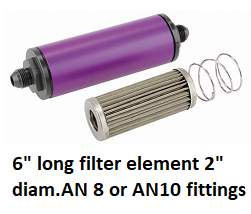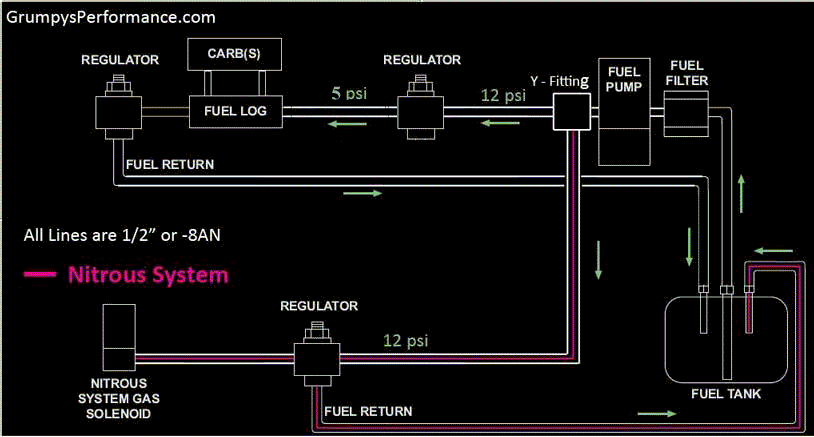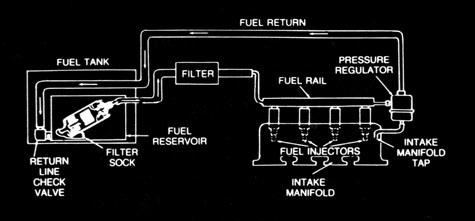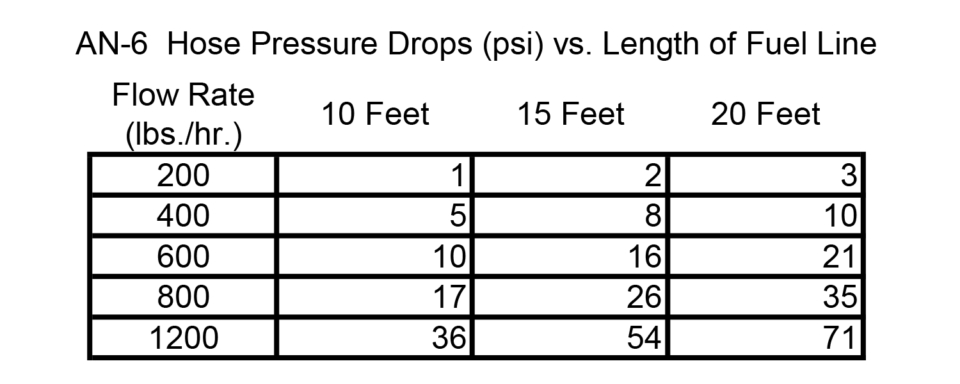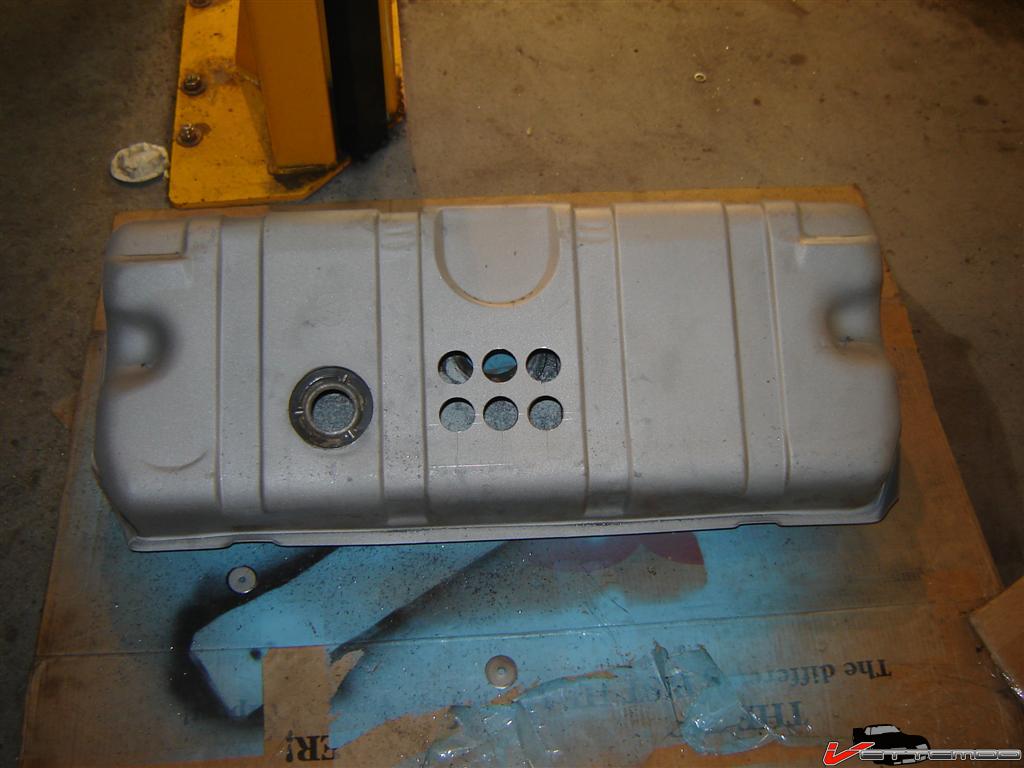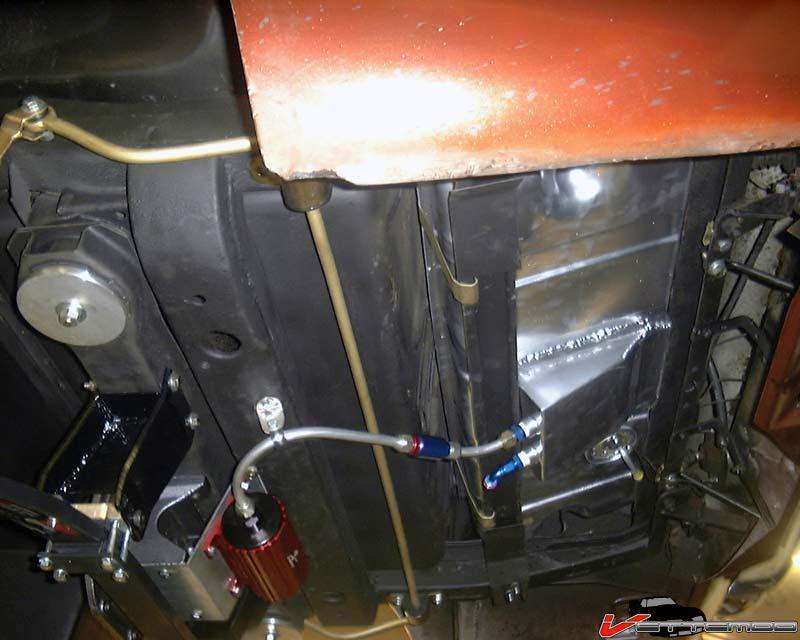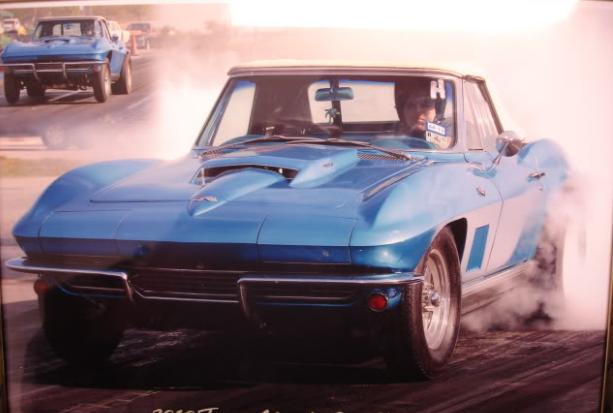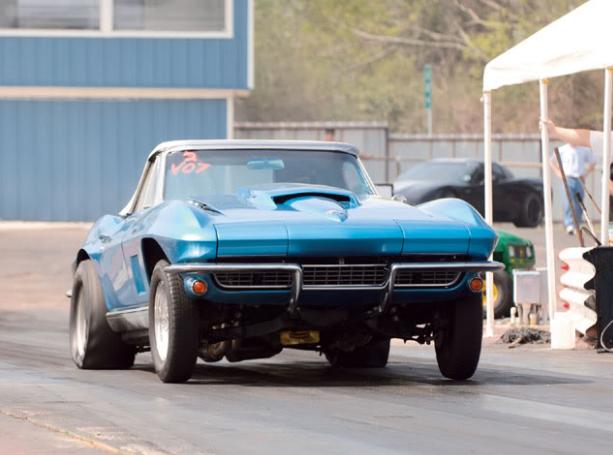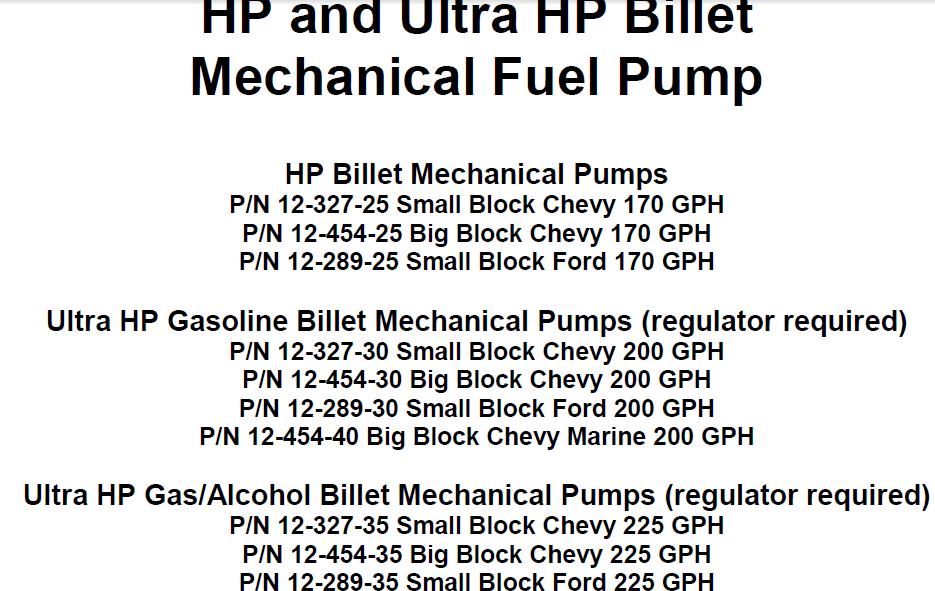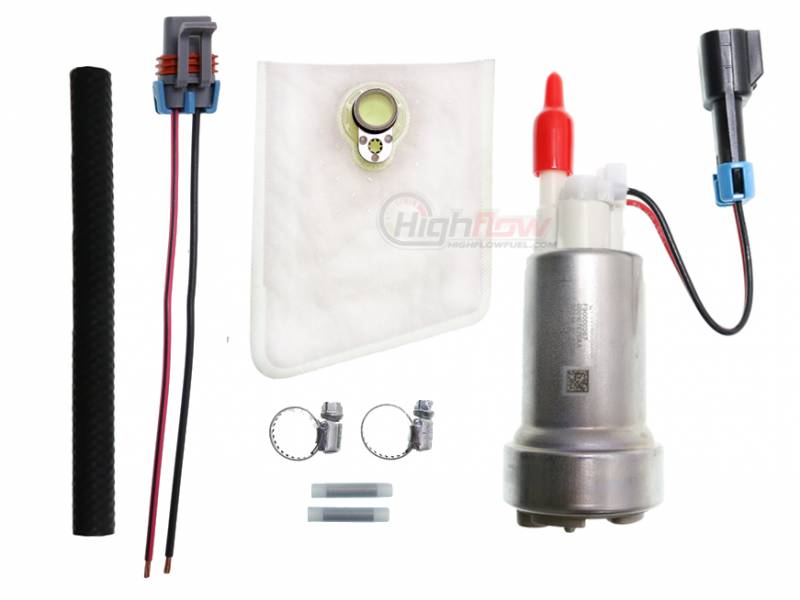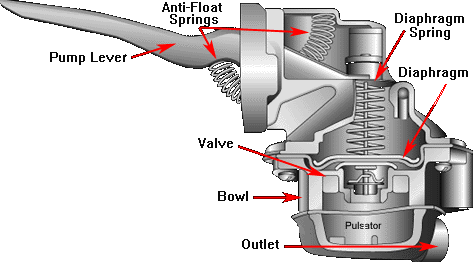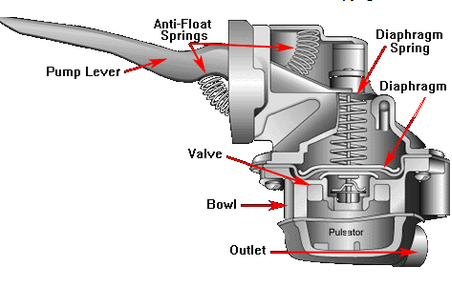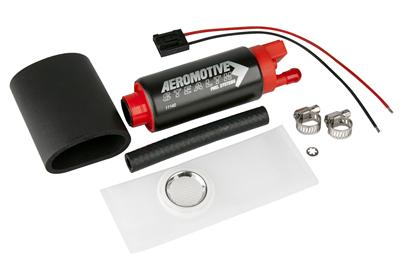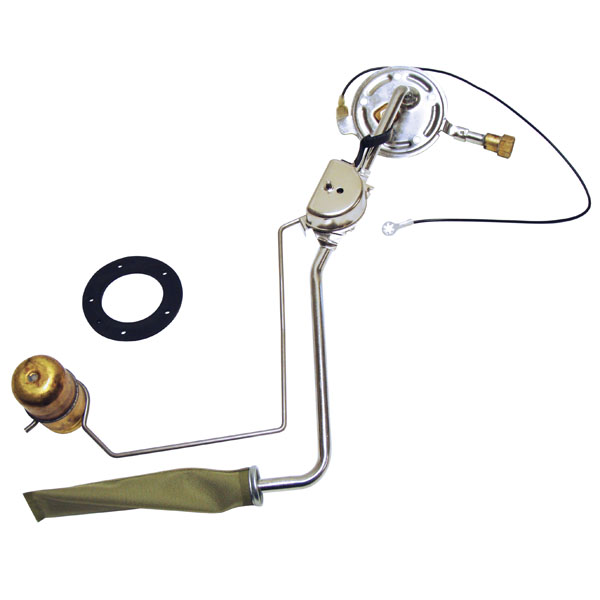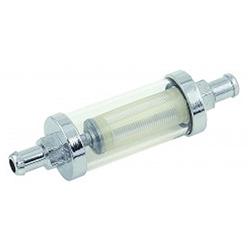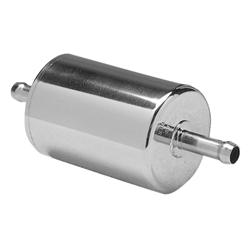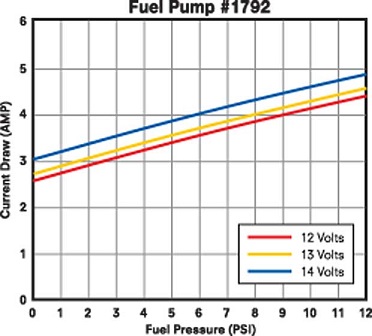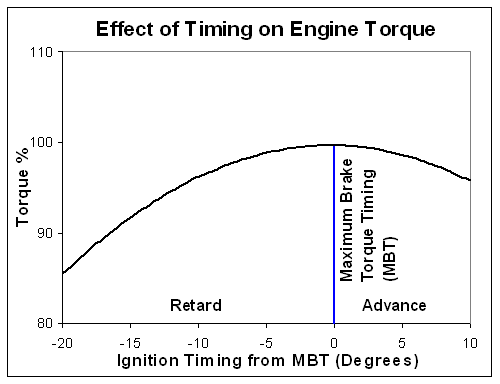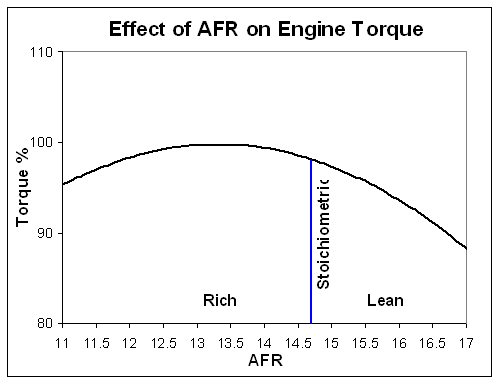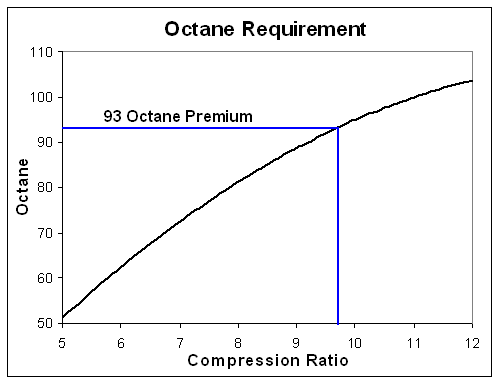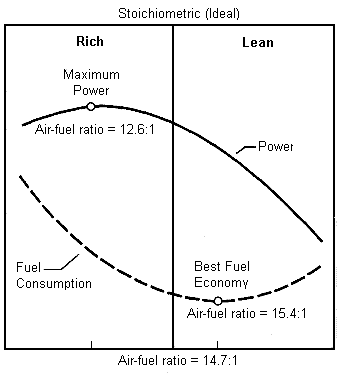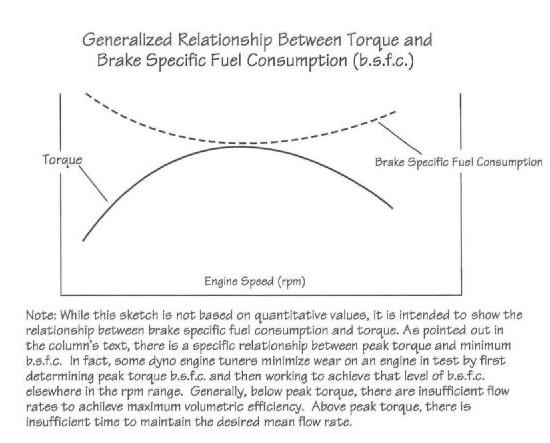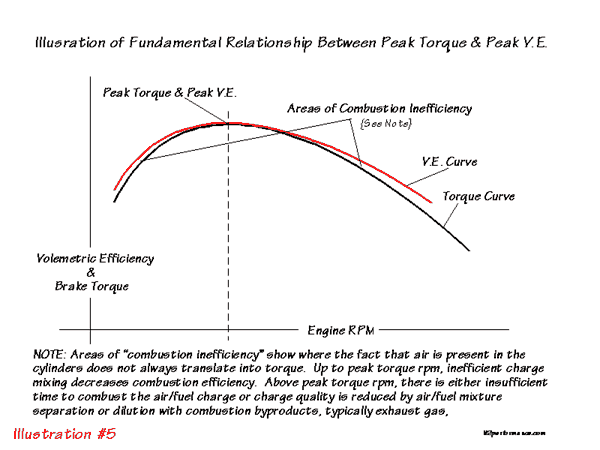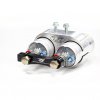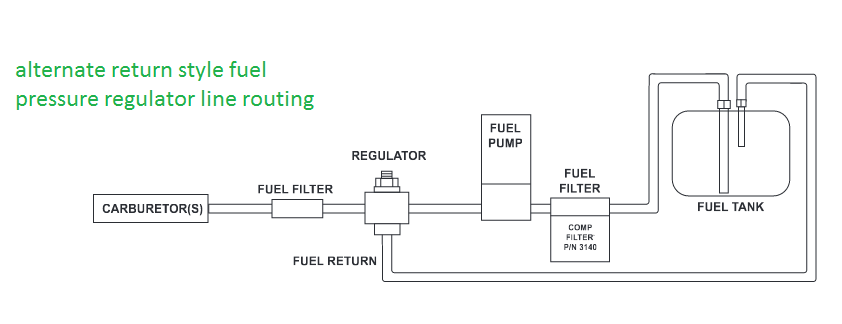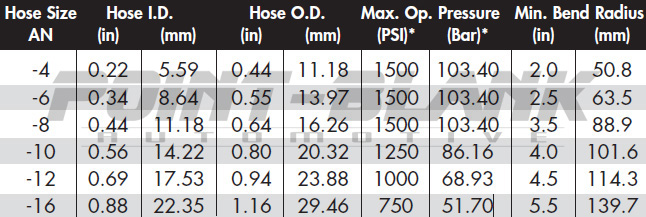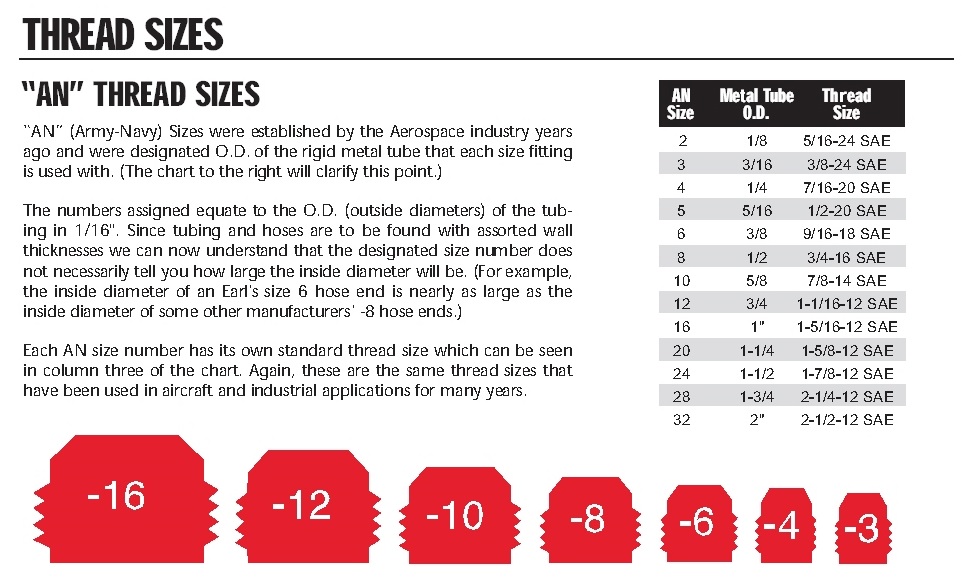for a decent performance engine, that many guys build, I think your generally going to find an engine used on the street having under 450 rear wheel horse power equipped, with a carburetor(S) you'll need consistent fuel flow at 5-6 psi,and 80-110gph ,Holley,G.M. PERFORMANCE, SUMMIT RACING, edelbrock makes a decent manual fuel pump that produces a rated 80- 110 gph suitable for most street cars, there are several electrical in line fuel pumps available
but once you exceed about 450hp, ID strongly suggest a AN8-1/2" fuel line and a 3/8" return line with a high quality fuel pressure regulator be used
 help.summitracing.com
calculating the engines potential fuel requirements at a given horse power level is hardly a "BLACK MAGIC ART FORM", all you need is to use simple math
help.summitracing.com
calculating the engines potential fuel requirements at a given horse power level is hardly a "BLACK MAGIC ART FORM", all you need is to use simple math
before you buy any electric fuel pump be sure it pushes the required volume per minute and at the correct pressure level,
read the related info carefully, efi pumps will require a fuel pressure regulator and generally run in the 44 psi-70 psi ranges
low pressure electrical fuel pumps are available for carb applications
Id just point out that in most O.E.M, in the fuel tank electric fuel pumps are cooled by sloshing fuel, if you let the tank regularly get below about 1/4 full the pump spends more time not being cooled to ideal levels and statistically it tends to wear out a bit faster, Id also point out that adding several ounces of Marvel Mystery Oil to each fill-up seems to help reduce wear issues and varnish and rust problems inside the fuel tank
look at the pictures in this thread carefully, similar too this,
the electric fuel pump is located in the lower 1/4 of the tank too insure its cooled by sloshing fuel
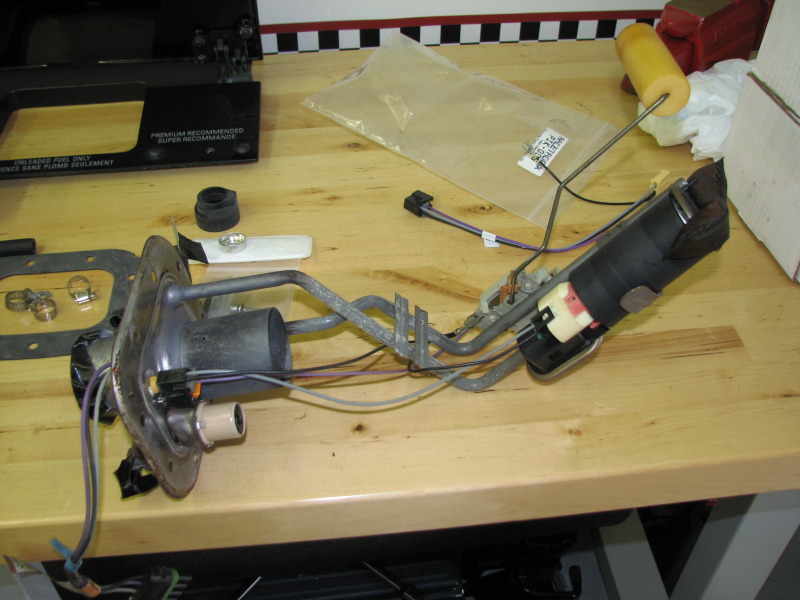
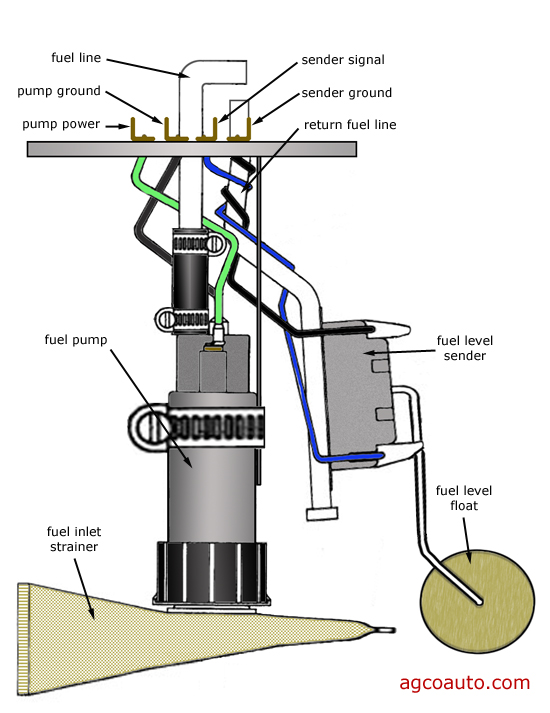
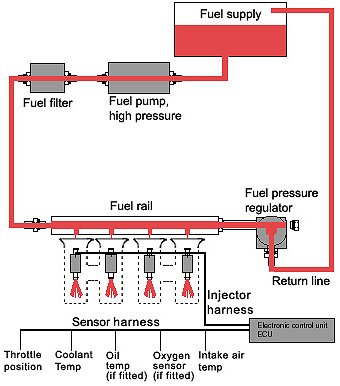
Filtering the Facts: How to Avoid Major Fuel Filter Mistakes
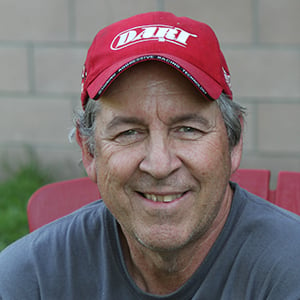
By JEFF SMITH JANUARY 03, 2017
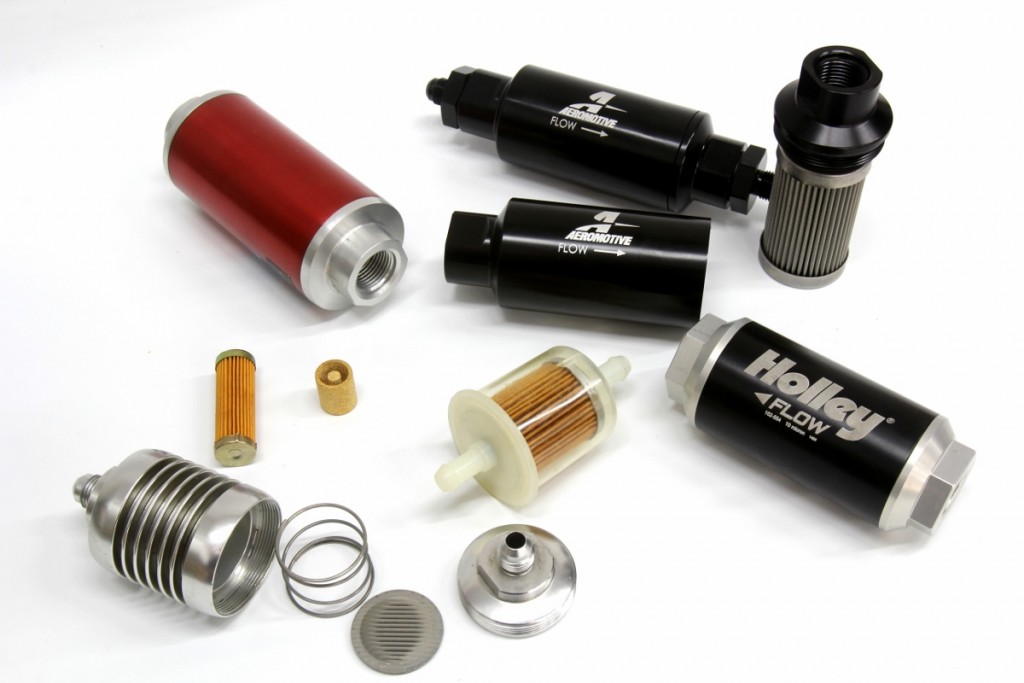
There are lots of options when it comes to fuel filters, but there are only a few smart choices for any engine making over 500 hp. Regarding filers, bigger is always better.
Photos and Words by Jeff Smith
In Shakespeare’s Richard III, in the middle of the battle, he cries “A horse, a horse! My kingdom for a horse!”
The 21st Century equivalent of that cry is a bit more muddled because when horsepower dies today, it might be more difficult to figure out where it went! We recently visited a shop where they had just removed a thumpin’ 572c.i. Chevrolet Performance big-block from a customer’s car because he had given up trying to make the engine run right. The solution was to swap in a late model LS engine.
Part of the conversion called for an upgrade from the original carbureted fuel delivery system to one designed for high-pressure and EFI. While removing the original fuel line, the guys discovered the real reason why the 620 hp Rat motor never ran right. The rear-mounted electric fuel pump was more than big enough to feed the engine, but was plumbed using a fuel filter with an area the size of a quarter. The filter was plugged with all kinds of debris and was obviously incapable of flowing anywhere near the amount of fuel the engine required. The engine didn’t burn a piston because the filter restricted flow so severely, it couldn’t make enough power to hurt itself!
This may sound like a simple oversight — which it obviously is. But, this is not an isolated case. Making big power in the 21st Century has never been easier. Magazine stories today don’t consider a 500-hp engine to be anything special. Attention seems to have focused now on street engines making upwards of 1,000 hp. What is often overlooked is the volume of fuel it requires to make this kind of horsepower. Yet, it seems many enthusiasts have not made the mental transition when it comes to filters. While most everyone’s attention is focused on high capacity fuel pumps, there’s more than a little thought and consideration that must be paid to the filter as well.
Let’s start with the more demanding EFI fuel delivery system. The best way to build a high-pressure EFI fuel delivery system is by designing it as a return system. This starts with a pre-filter ahead of the pump, along with another filter after the pump with a finer filter and the entire system plumbed with sufficient size lines and full-flow fittings. The return line must also be the same size as the feed line to prevent backpressure. We will focus this story on filters, but an emphasis on the entire system as a whole is the only way to create a successful and efficient fuel delivery structure.
The most critical location or position in any fuel delivery system is the inlet side of the pump. All pumps, including electric fuel pumps, will deliver maximum performance when the inlet to the pump is unrestricted. This is because pumps are designed to push fuel and are generally not efficient at pulling fuel into the inlet. This is why submerged, in-tank pumps are by far the most efficient. However, an inlet filter is still required because high pressure EFI pumps operate using very tight tolerances. If debris finds its way into the pump, the result is likely a quick failure.
We will be using Aeromotive’s recommendations for filters, and these same requirements will hold true with any high-output fuel delivery system. The idea is to create a balance between protecting the pump while minimizing flow restrictions. Aeromotive specifies a 100-micron filter for the inlet side of an EFI pump. A micron is equal to 0.00039-inch, which means a 100 micron filter is capable of trapping debris that’s at least 0.039-inch in diameter and perhaps slightly smaller. This will prevent large foreign material from harming the pump. As the filter’s micron rating number becomes smaller (trapping finer particles) it also becomes more of a restriction. A 100 micron rating on the inlet side still filters large particles but is a minimal restriction. On the high pressure side of the pump, the spec is far tighter to remove material that could foul a fuel injector. The Aeromotive spec for this filter recommends 10 microns (0.0039-inch), a full 10 times finer than the inlet side.
But, even more important than the particle size is the filter’s surface area. Common sense dictates that a large surface area for a filter is probably more important than its screen size. A large surface area allows the filter to do its job for an extended period of time without worry that debris will reduce fuel flow. That’s why these filters are so large. Keep in mind that during part-throttle operation, nearly all of the fuel is returned to the tank. This moves the fuel through these filters far more often than a non-return system.
There’s also a choice of filter materials. Aeromotive and others offer both paper (cellulose) or a cleanable stainless steel. Obviously, the stainless media allows the user to clean the filter and re-use it — assuming, of course, your cleaning solution (like dirty solvent) does not add debris to the filter!
One important point is to never use a cellulose or paper filter with E85 fuel. Aeromotive says they have seen issues where ethanol creates a gel when used with a paper fuel filter. Remember, ethanol is predominantly an organically-based fuel, as opposed to pure gasoline that is petroleum-based. E85 is no different that grain alcohol except for the 15-percent gasoline mixed with it. So, to prevent this “biological fouling” — essentially a bacterial slime — from growing inside your fuel system, stick with stainless steel filters. To support this, Aeromotive makes a special 40-micron stainless steel filter specially designed for use with E85.
Carbureted systems are no less vulnerable, as evidenced by the builder’s misuse of that tiny fuel filter on that 572c.i. big-block example in our story introduction. It’s easy to understand how this oversight could happen. While carbureted fuel pressures are significantly lower than EFI systems, fuel volume is still a crucial requirement. The engine’s horsepower potential determines the flow capacity required of the system. You can’t make horsepower without fuel.
A simple equation can help in determining capacity. We’ll keep the math to a minimum, but if a normally-aspirated big-block Chevy is capable of 750 hp, let’s assume a BSFC number of 0.5. BSFC is the acronym for brake specific fuel consumption — a fractional rating of the pounds of fuel required to make one horsepower for one hour. In this case, that comes to a half-pound of fuel per horsepower per hour. If the number were larger (0.65 for example), the engine would require more fuel to make the same horsepower. Conversely, if the BSFC number is smaller (0.35 as an example), it is more efficient at converting fuel into power, requiring less fuel.
So with a BSFC of 0.5, this means for a 750-hp engine, we divide 750 by 0.50, which gives us a minimum of 375 pounds of fuel per hour. In order to ensure we will supply enough fuel, we will add a little “head room” to the number, making it 400 pounds of fuel per hour as a safety margin. Divide 400 pounds by the weight of gasoline at 6.2 pounds per gallon and that equals almost 65 gallons of fuel per hour at a minimum pressure of at least 5 to 6 psi.
Despite the fact carburetors don’t demand the same pressure as EFI systems, flow is still important. With flow rates increasing with higher horsepower engines, a full return-style system is the best way to build a system, even for a carburetor. This can be easily accomplished with a return-style regulator.

If you’re not sure of the cartridge’s filter rating, it is stamped on the closed end of the filter. In this case, it’s a 100 micron filter.
Regarding filters for a carbureted application, a 100-micron inlet filter is still a good idea while the pressure side filter does not have to be quite so fine, so a 40 micron filter with a large surface area would be the best. Because of these lower pressures, these inline filters can be slightly smaller with no fear of flow restrictions. For example, the Aeromotive PN 12335 filter offers a slightly shorter 5.5-inch long body with a stainless steel 40-micron filtering ability that can easily accommodate even a dual-carbureted Pro Stock big-block application.
As street cars become more sophisticated and engines continue to make more power, the fuel filter is one of those few instances where bigger is better and where more surface area only means more flow. So at least here, you can’t go wrong by going big.
Sources: Aeromotive; 913/647-7300; aeromotiveinc.com; Holley Performance Products; 270/781-9741; holley.com; Edelbrock(Russell); 310/781-2222; edelbrock.com
http://garage.grumpysperformance.com/index.php?threads/replacing-a-c-4-fuel-pump.33/
https://www.holley.com/products/fue...ed_fuel_pumps/carbureted_electric_fuel_pumps/
http://www.jegs.com/c/Fuel-Carbs-Intakes_Electric-Fuel-Pumps/10307/10002/-1
http://www.edelbrock.com/automotive/mc/fuel-pumps/
http://www.mechanicalcaveman.com/best-electric-pump-for-carburetor-fuel-pump-review/
http://www.enginelogics.com/confirm-your-dyno-results/
http://garage.grumpysperformance.com/index.php?threads/setting-up-your-fuel-system.211/#post-26636
http://www.summitracing.com/parts/edl-1722/overview/
http://fuelinjectorclinic.com/hp-calculator
http://fuelinjectorclinic.com/flow-calculator
http://www.eastcoastrollingthunder.com/jmiller/finject1.htm
http://www.highflowfuel.com/i-10388...-pump-with-installation-kit-and-strainer.html
https://www.aeromotiveinc.com/fuel-pumps-and-horsepower/
http://www.superchevy.com/how-to/0606ch-carbureted-motor-fuel-system/
GET A FUEL PRESSURE GAUGE AND MEASURE DON,T GUESS
how can you possibly set up your fuel system unless you know the pressure and flow rates required and what currently exist's

READ LINKS
http://garage.grumpysperformance.com/index.php?threads/setting-up-your-fuel-system.211/
http://garage.grumpysperformance.com/index.php?threads/fuel-pressure-regulators.635/
http://garage.grumpysperformance.com/index.php?threads/how-big-a-fuel-pump-do-you-need.1939/
http://garage.grumpysperformance.co...ss-fuel-pressure-regulators.12776/#post-65998
combinations:
(HP x BSFC = pounds of gasoline)
500 hp x .5 BSFC = 250 pounds of gasoline.
500 hp x .75 BSFC = 375 pounds of gasoline.
Since a gallon of fuel weighs about 6.2 pounds, we find that in our first example, 250 / 6.2 = 40 gph (gallons per hour) and 375 / 6.2 = 60 gph.
the needle/seat, in a carbs float bowl,controls the fuel level by opening and closing the needle valve, in the fuel bowl, and its designed to generally can control fuel inlet pressures below 8 psi
(but generally works best at 5-6 psi)volume of flow only come into play once the needle valve opens and that relates to how quickly the floats being raised back to the point the needle seat closes
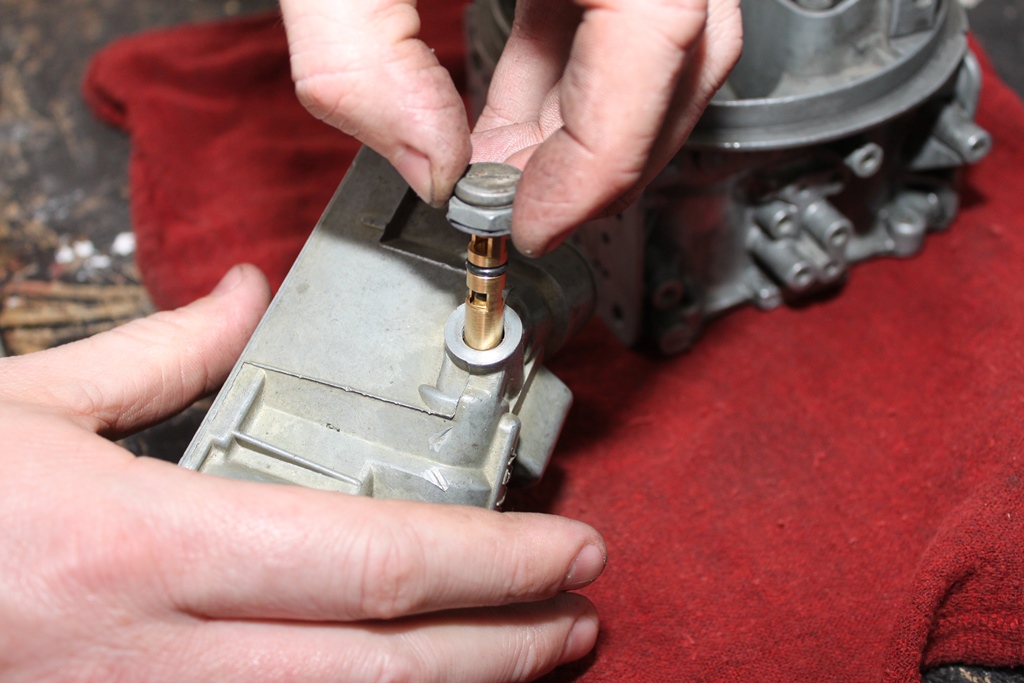
A carburetor setup requires very low fuel pressure—somewhere between 5 and 6 psi,pressures higher than 6 psi can force open the flow control valve on some carbs,
be aware that you,ll need to correctly set the carbs floats to regulate the fuel level in most carbs and the needle & seat valve that controls fuel flow into the carb can get crud trapped between the needle and seat causing the fuel bowl to constantly flood, so check that carefully, if thats your issue!
YOU GENERALLY SET THE FLOATS TO JUST LET FUEL WET THE SITE PLUGS LOWER THREADS, BY ADJUSTING THE NEEDLE SEAT HEIGHT IN THE FLOAT BOWL
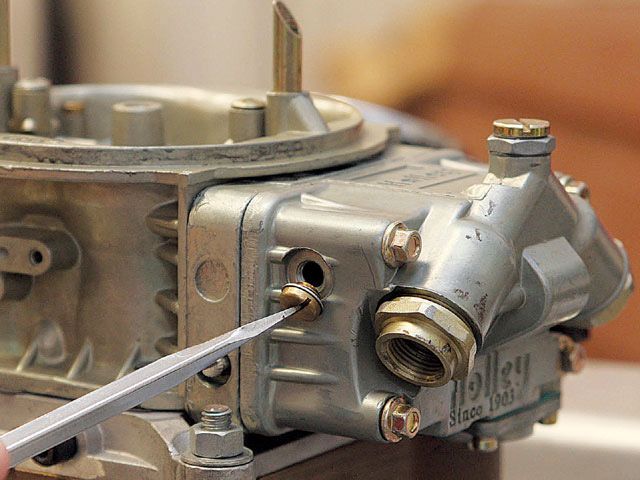
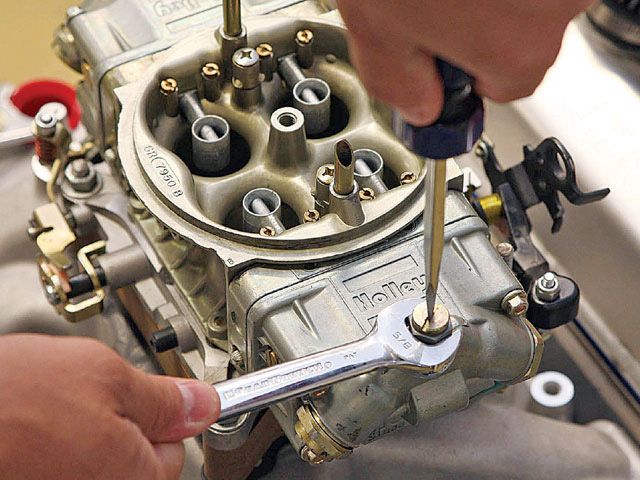
A COUPLE HIGHER FLOW ELECTRIC FUEL PUMPS
http://www.jegs.com/i/Holley/510/12-150/10002/-1 (this pump has proven to work really well in many 500hp-to-600hp carb equipped cars)
http://www.jegs.com/i/Edelbrock/350/1792/10002/-1 (this is overkill unless your exceeding 600hp)
http://www.prpracingproducts.com/products-page/fuel-system-accessories/fuel-pressure-regulators/it makes no logical sense to run 1/2" or AN#8 lines to and from a pressure regulator , or fuel pump or fuel filter,with restrictive AN#6 or 3/8" lines so use a regulator and lines and fittings that all match and allow max flow with little restriction
VERY INTERESTING ADDITION TO THE POTENTIAL FUEL SYSTEM DESIGN
http://www.motoiq.com/MagazineArticles/ ... rvoir.aspx
if your looking for an EFI fuel pump this link and its sub links will be useful
viewtopic.php?f=32&t=33
LOOK AT THE CHART POSTED BELOW.
KEEP IN MIND IF YOU DECIDE TO GO FOR A CHEAPER FUEL PUMP LIKE THIS RATED AT 30 GPH,
(THE RATED FREE FLOW RATE ALWAYS EXCEEDS THE BACK-PRESSURE RESTRICTED RATE, OF FLOW IT ACTUALLY OPERATES AGAINST)
your limiting the potential power its designed too feed to under 400hp
http://www.summitracing.com/parts/CRT-M4530
http://garage.grumpysperformance.co...ir-ratios-that-gets-ignored.15506/#post-92064
fuel injection usually requires a 40psi plus fuel pressure, the line size and the fuel pressure regulator will have a big effect on your results, theres some threads and calculators above that will help,
generally a 110-150 gph pump and 3/8" / AN#6 lines minimum ,works fine up to about 550- maybe even 575hp, IN A FEW CASES with carbs BUT above that POWER LEVEL Id suggest a 1/2 AN#8 line
(Ive always used AN#8 and a 135 gph-150 GPH rated pump on carb equipped application's for street/strip cars")
and selecting a fuel pump that can supply at least 50% more flow than the carb or injectors can flow to compensate for the flow restrictions the filter and lines etc. provide. THERES A SET OF CALCULATIONS BELOW TO ALLOW YOU TO MATCH YOUR APPLICATION TO WHAT YOU NEED IN A FUEL PUMP FLOW RATE
now I,m sure youll find formulas that indicate you can easily get by with a 70-80 gph fuel pump on most street driven engine combos, but my experience, and that of many other muscle car owners, has shown that the rated flow and the actual fuel delivery varies due to restrictions in fuel lines and fittings on those fuel lines and inertial loads, during acceleration
I generally run hard lines for fuel supply and return, but I have run flex lines inside 3/4" emt electrical tubing inside the frame rails ,except for the last 18" between fuel pressure regulator and carb. I buy flex and or hard lines at the local hydraulic supply after I measure very carefully then have them fabricate the lines.. with the correct ends fabricated on the ends of the lines.
Ive found , running 3/4" EMT tubing which is fairly easy to bend then slipping flex line thru it to be a good system, and yes before you ask youll want to have two because youll have a RETURN LINE , but having two hard lines and skipping the flex inside the protective outer EMT, takes up less room[/color]

http://static.summitracing.com/global/i ... a-5250.pdf

one of the most common mistakes less than experienced performance enthusiasts, face and very commonly over-look, is the fact that the internal cross sectional area on many hydraulic and fuel line fittings are considerably more restrictive to flow that the fuel limes or hydraulic lines inside diameter they were designed to be used with, and it varies a great deal between different manufacturers, now ideally the fittings internal passage cross sectional area is both consistent and the same or greater that the tube or hydraulic line size, it listed to match, , so a 1/2" inside diameter fuel line, or hydraulic lines?hoses, for example should have components for the connections and fittings that have significantly smaller internal cross sectional areas, it does you very little good to use lets say, AN#8 or half inch fuel lines if the internal cross sectional area of the connections and fitting used with those lines is only 3/8" or smaller in cross sectional area,this is an area where dealing with a local hydraulic supply shop that has the correct tools and fittings to custom fabricate your fuel lines, coolant or lubrication lines is a very good idea!
talk to a local professional at your local hydraulic supply, measure accurately, take the time to explain what your trying to accomplish and take several pictures to show them what your doing, and get them too fabricate any high pressure fuel or coolant lines and related fittings
As a general rule you want to have a fuel pump rated at 350 lph or at least 95 GPH, and 3/8" fuel lines,
on a street performance car that has about 500 hp or less.
this provides a healthy margin to over-come the flow restrictions that will be present with smaller than ideal fuel lines and fittings and fuel filters cause to actual flow rates
keep in mind EFI systems generally require about 40-50 psi, while most carbs require about 6-8 psi at the pump,
and a fuel pressure regulator to maintain a consistent 5 psi at the carb inlet port
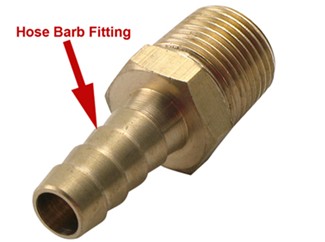
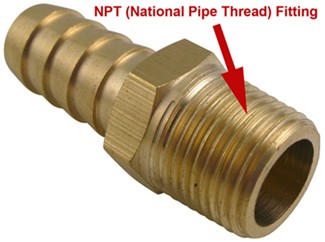
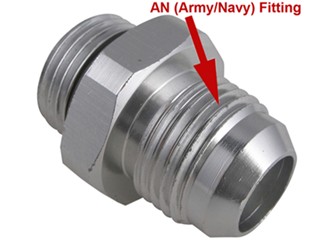
*for fuel pumps
Up to 45 GPH= 3/4 GPM = 5/16" or -04 AN
*
Up to 90 GPH = 1.5 GPM= 3/8" or -06 AN
*
Up to 250 GPH =4.2 GPM= 1/2" or -08 AN
nearly ideal for transmission and oil coolers
*
Up to 450 GPH =7.5 GPM= 5/8" or -10 AN
*
Up to 900 GPH = 15GPM 3/4"or -12 AN
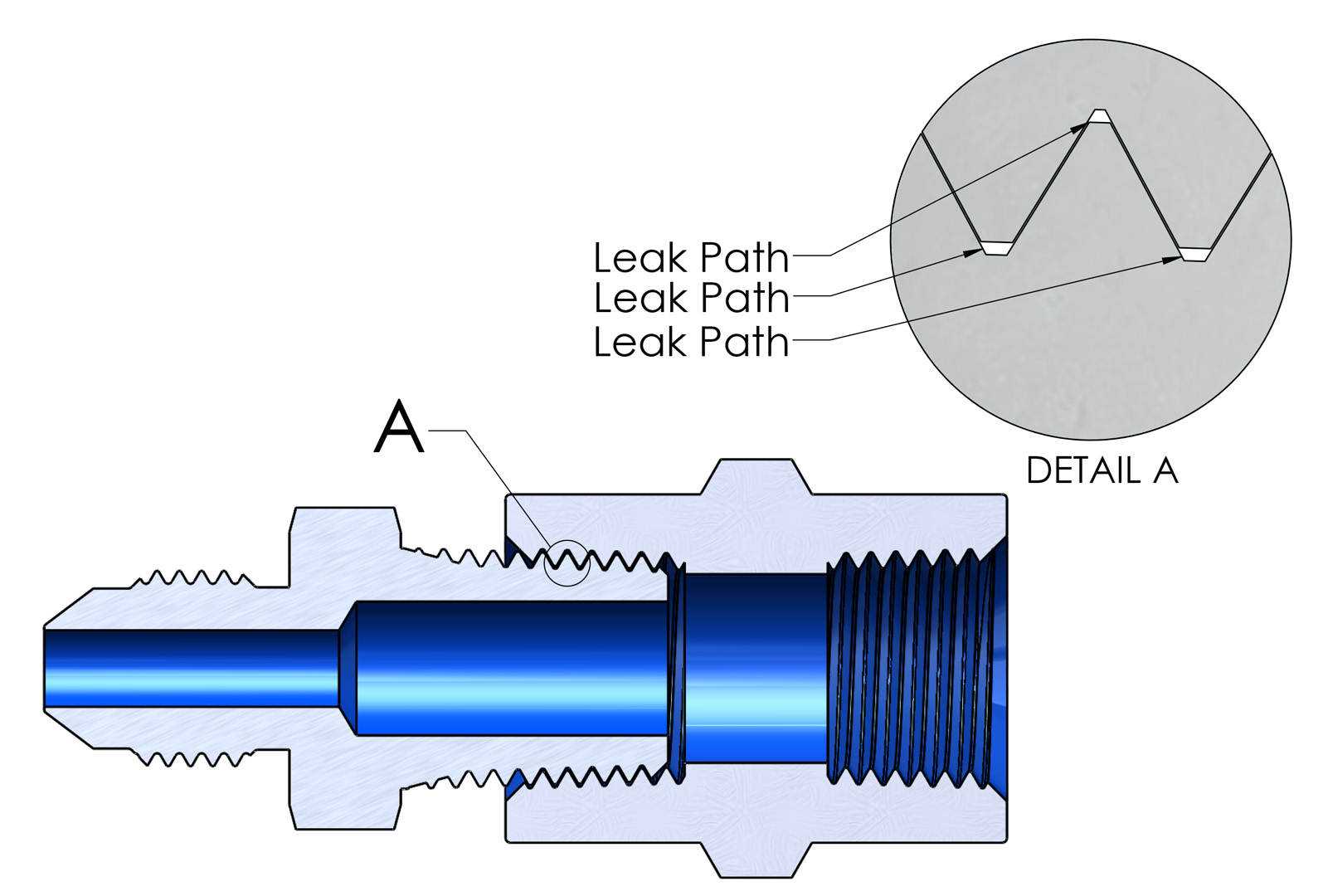
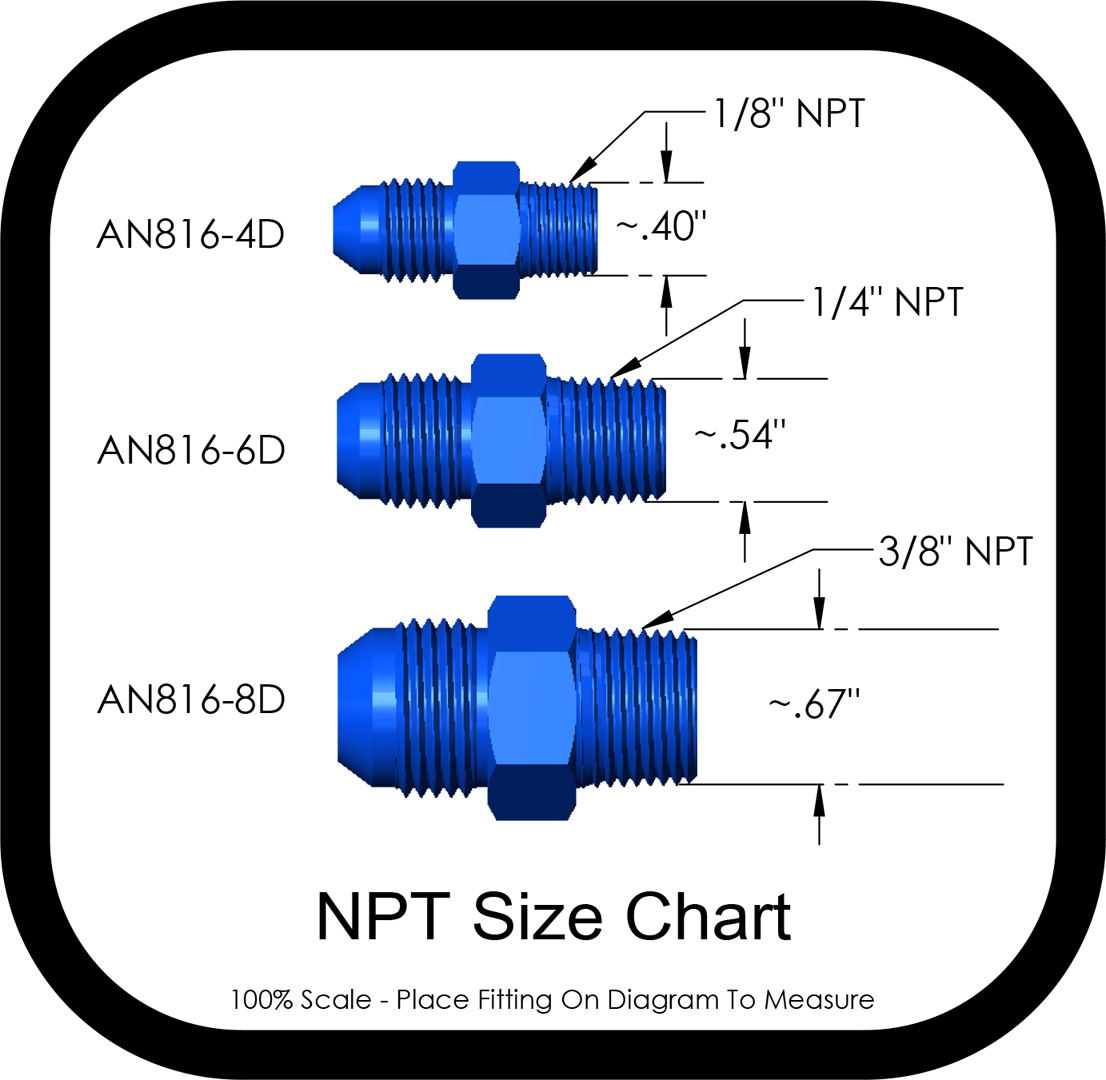
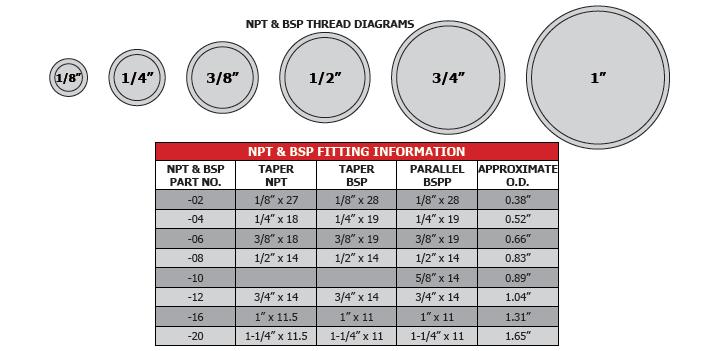
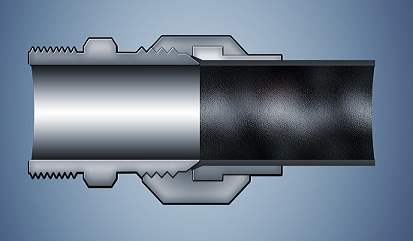
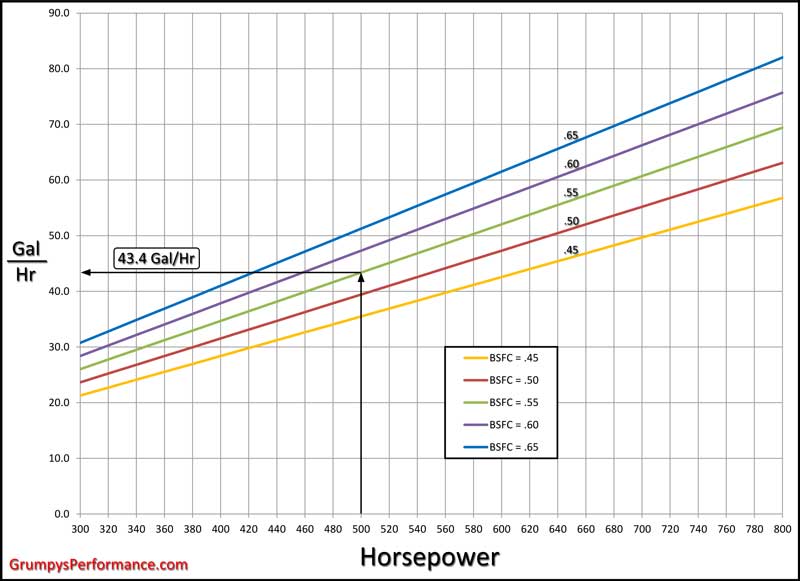
keep in mind that thats the minimum required, a fuel system has restrictions to flow rates like filters ,fitting and internal line flow restrictions requiring you to have a slightly higher actual supply volume and pressure
I used a earlier version of this fuel pump on my last carb race car
any electric fuel pump location, should be as close to the tank and as low as possible, having the pump gravity fed from the tanks a big help because electric pumps PUSH fuel FAR more efficiently than they can draw or suck fuel, if it takes much resistance to get fuel to flow to the electric fuel pump feed its almost always going to cause some problems.
https://www.powerperformancenews.co...00-hp-street-engine-big-power-means-big-fuel/
in an ideal install you'll frequently use a factory made baffled fuel cell to replace the original and use an internal mount fuel pump that allows fuel around the pump to cool the pump and provide a far more efficient fuel supply
read this thread
and use the calculator
http://2.3liter.com/Calc1.htm#FPHP
viewtopic.php?f=55&t=733&p=1030&hilit=fuel+cell#p1030
http://garage.grumpysperformance.co...ir-ratios-that-gets-ignored.15506/#post-92064
if you choose to add a weld on sump don,t cut a huge sump size hole is reduces tank structural strength, this picture suggests drilling large holes in the tank floor before welding on the sump, Ive found 3-to-5 1/2" holes rather centrally located over the sump and AN#8 fuel lines are all thats required even on an 800hp big block car

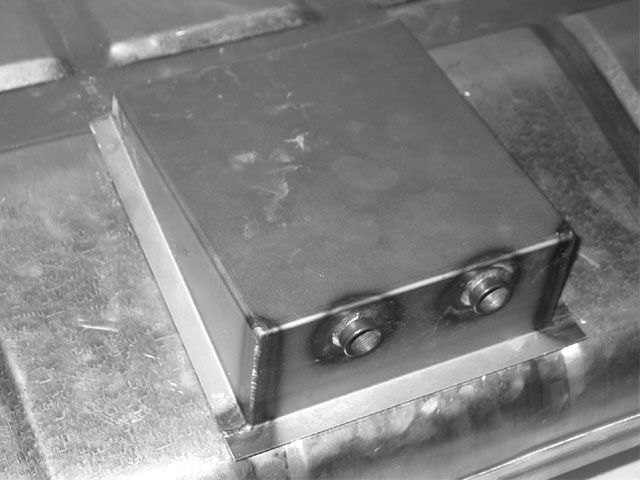
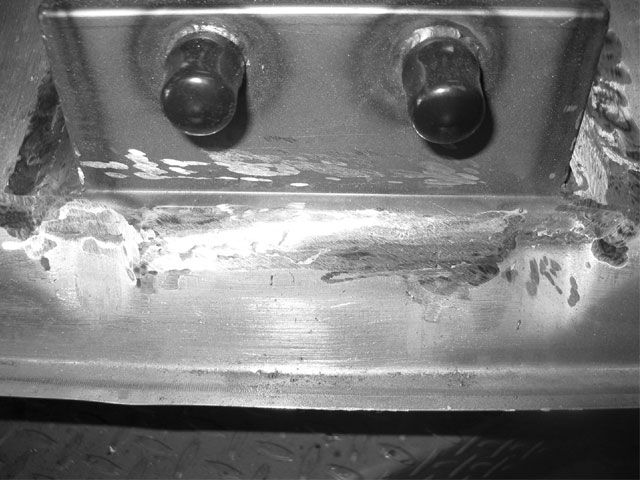
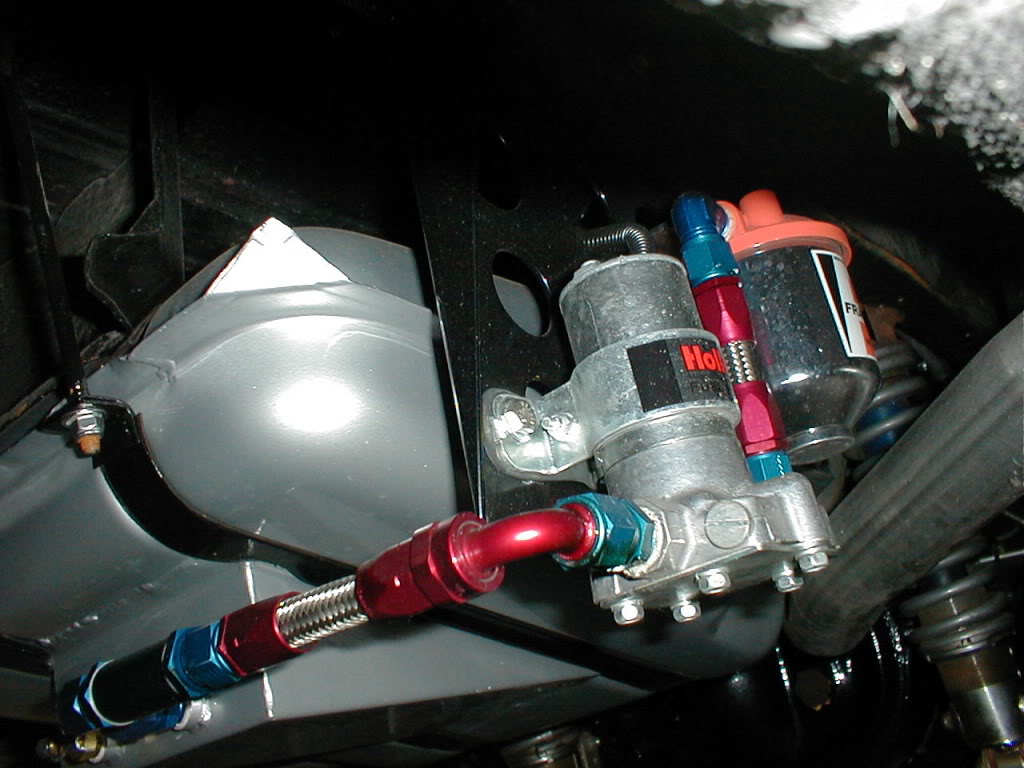
BTW BEFORE WELDING ON A FUEL TANK WASH IT OUT WITH SOAPY WATER RINSE SEVERAL TIMES AND FILL THE TANK WITH WELDING SHIELD/inert GAS LIKE ARGON OR C02 BEFORE WELDING ON A SUMP
now many guys do find that its much cheaper to weld a sump to an existing fuel take and modify it for a larger external mount electric fuel pump
btw
before you get crazy chasing some problem your sure is an intermittent fuel delivery issue
(1) Do a compression test!
(2) verify your ignition advance curve, and verify the ignition systems working correctly , the spark plugs are new, properly gaped and the ignition wires in excellent condition visually and with an OHMS meter.
(3) adjust your valves, correctly
(4) carefully verify theres no vacuum leaks, in lines or gaskets
(5)Check the fuel delivery system, WITH A GAUGE, while the engines under real operational inertial loads to verify you have a consistent 5-6 psi at the carburetor inlet port
(6) change out the fuel and air filters, especially if over 3-4 months old
(7) actually check your exhaust back-pressure levels
(8) verify your return style fuel pressure regulator and fuel lines function as intended
(9)verify your using FRESH FUEL WITHOUT MOISTURE OR PARTICULAR CONTAMINANTS
(10) actually look for and read installation instructions and rated flow and pressure limitations on fuel pumps and filters
(11) If ALL of the above are normal, only then start looking at the carburetor, and tuning issues
I think most guys would be amazed at how often, a high flow water separating fuel filter installed near the fuel tank that,s being checked and drained, with the filter medium changed regularly will cure or prevent a good many TUNING ISSUES
http://www.harborfreight.com/38-x-38-ba ... 68213.html
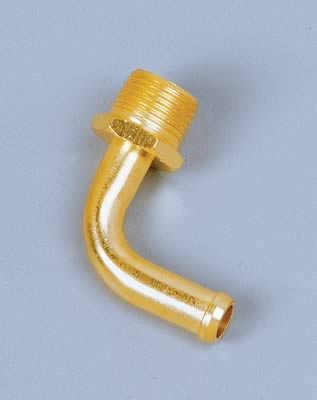
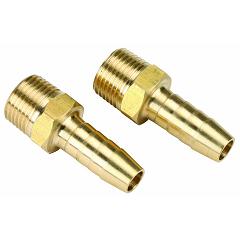
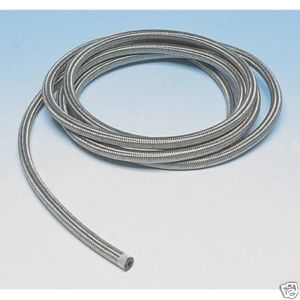
http://www.amazon.com/RACOR-320R-RAC-01 ... m_sbs_sg_2
http://www.amazon.com/Moeller-Separatin ... d_sbs_sg_1
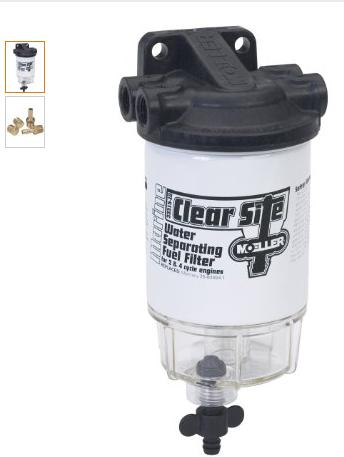
fuel injection usually requires a 40psi plus fuel pressure, the line size and the fuel pressure regulator will have a big effect on your results, theres some threads and calculators above that will help,
generally a 110-150 gph pump and 3/8" / AN#6 lines minimum ,works fine up to about 550- maybe even 575hp, IN A FEW CASES with carbs BUT above that POWER LEVEL Id suggest a 1/2 AN#8 line
yes I know you don,t want to read the linked info and use calculators.....its mandatory if you want correct
http://www.weldonracing.com/product/64/ ... _Pump.html
answers read thru these threads carefully
http://www.quickfueltechnology.com/tech ... l-pressure
http://www.centuryperformance.com/fueli ... g-140.html
http://web.archive.org/web/200701062316 ... 1.htm#FPHP
http://www.knizefamily.net/minimopar/fuelsystem.html
http://www.epi-eng.com/piston_engine_te ... ciency.htm
http://www.atlinc.com/racing.html
http://2.3liter.com/Calc1.htm#FPHP
http://garage.grumpysperformance.co...ir-ratios-that-gets-ignored.15506/#post-92064
http://www.rceng.com/technical.aspx
http://www.chevyhiperformance.com/techa ... ewall.html
http://www.witchhunter.com/injectorcalc1.php4
as a rough guide, and assuming your running a carb engine with the correct fittings and fuel pump etc
this is about the max hp those fuel lines can be expected to support
AN4 (5/16")=375hp
an6 (3/8")=575hp
AN8 (1/2")=850hp
if your running a return style fuel pressure regulator it depends on the instructions that come with it and the number of ports,its usually mounted AFTER the two carb inlet fuel feeds
the pump feeds the fuel log, the fuel log feeds both carb inlets and the regulator mounted on the far end of the fuel log from the fuel feed bleeds off excess pressure to the return line to the the tank.

BASIC CAR FUEL SYSTEM DESIGN
but on some models its mounted just before the fuel log on the port labeled "CARB" and the two other ports are labeled "feed" for the pump and "RETURN", for the return line
Assume a BSFC of 0.55 and gasoline at 6.25 lbs/gallon: BFSC Brake Specific Fuel Consumption
horse power x 0.55 = pounds of fuel burned per hour
example
600hp x .55=330lbs
330lb /6.25lbs per gallon=52.8 gallons an hour minimum fuel used.....keep in mind pumping loss thru the lines , inertial loads and heat can easily reduce actual flow rates by more than 50% so if you require 50gph your unlikely to meet demand with less than a 100-120 gph pump even with the correct line sizes[/b]
http://www.centuryperformance.com/fueli ... ncies.html
HERES SOMETHING FAR SUPERIOR, to stock fuel filters if you need something better
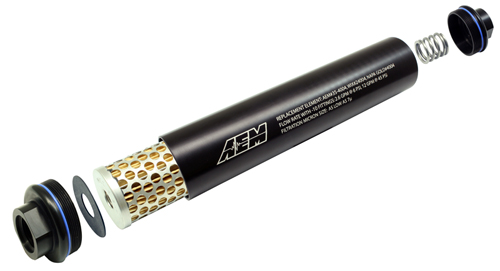
http://www.aemelectronics.com/universal ... ilter-1212
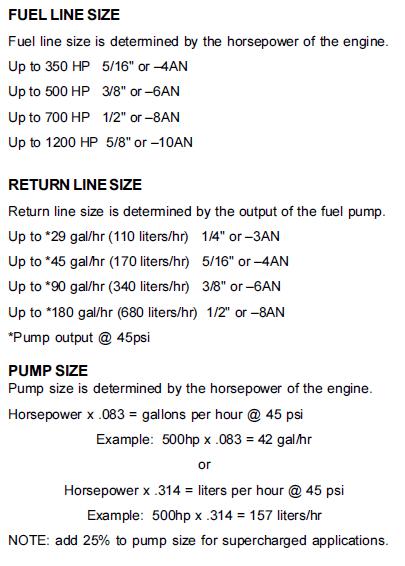
KEY FEATURES
Machined from 6061-T6 aluminum and hard anodized black
Flows up to 12.32 gpm @ 45 PSI and 2.63 gpm @ 6 PSI with -10 port fittings
Filters as low as 7 microns
Viton o-rings and gaskets ensure outstanding performance when using gasoline, alcohol or gasoline/alcohol blended fuels
End caps are machined with -10 AN female fittings with o-ring receiver groove
End caps have pressure intensifiers for greater sealing of end gaskets
2†OD x 10†length for easy mounting
Commonly available replacement filter cartridges
Laser etched with AEM logo, flow and filter replacement information
The AEM High Flow -10 AN Inline Fuel Filter is CNC machined from 6061-T6 Aluminum and Hard Anodized Black. AEM’s engineers designed this filter with the racer in mind and with the intention of maximizing flow, filtration and ease of installation. The end caps are machined with -10AN female fittings with o-ring receiver groove that allow the filter to flow up to an astonishing 12.32 gpm @ 45 PSI and 2.63 gpm @ 6 PSI. All sealing o-rings and gaskets are made of Viton for outstanding performance when using gasoline, alcohol or gasoline/alcohol blended fuels. The commonly available replacement filter cartridges filter as low as 7 microns. The standard 2†OD allows for easy mounting virtually anywhere in the vehicle.
read thru the links and sub links
A naturally aspirated 500 horsepower engine has a BSFC of about 0.5. It would use 250 lbs. of fuel per hr.
500 X 0.5 = 250 lbs./hr.
A gallon of fuel weighs 6 lbs. To get gph divide lbs./hr. by 6.
250 lbs./hr. ÷ 6 = 41.67 gph
A liter of fuel weighs about 1.6 lbs. To get lph divide lbs./hr. by 1.6
250 lbs./hr. ÷ 1.6 = 156.25 lph
You need the minimum flow rate at your fuel system’s operating pressure. For Carburetors, this is between 4-7.5 psi. Fuel Injection will usually be between 35-65 psi.
In the following example of a curve chart, flow is shown by the green and blue lines. This pump has a free flow rate of 78 gph. At 60 psi. flow rate drops to 62 gph.
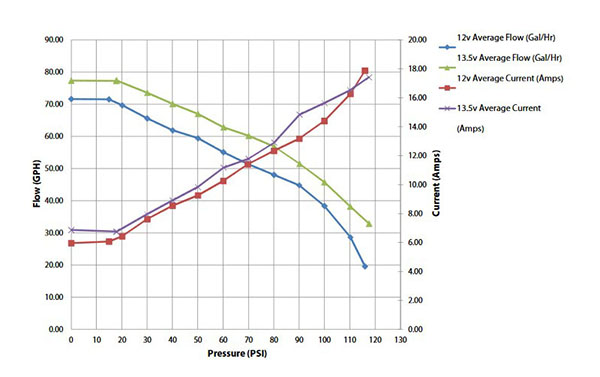
but once you exceed about 450hp, ID strongly suggest a AN8-1/2" fuel line and a 3/8" return line with a high quality fuel pressure regulator be used
What size fuel pump do I need?
before you buy any electric fuel pump be sure it pushes the required volume per minute and at the correct pressure level,
read the related info carefully, efi pumps will require a fuel pressure regulator and generally run in the 44 psi-70 psi ranges
low pressure electrical fuel pumps are available for carb applications
Id just point out that in most O.E.M, in the fuel tank electric fuel pumps are cooled by sloshing fuel, if you let the tank regularly get below about 1/4 full the pump spends more time not being cooled to ideal levels and statistically it tends to wear out a bit faster, Id also point out that adding several ounces of Marvel Mystery Oil to each fill-up seems to help reduce wear issues and varnish and rust problems inside the fuel tank
look at the pictures in this thread carefully, similar too this,
the electric fuel pump is located in the lower 1/4 of the tank too insure its cooled by sloshing fuel



Filtering the Facts: How to Avoid Major Fuel Filter Mistakes

By JEFF SMITH JANUARY 03, 2017

There are lots of options when it comes to fuel filters, but there are only a few smart choices for any engine making over 500 hp. Regarding filers, bigger is always better.
Photos and Words by Jeff Smith
In Shakespeare’s Richard III, in the middle of the battle, he cries “A horse, a horse! My kingdom for a horse!”
The 21st Century equivalent of that cry is a bit more muddled because when horsepower dies today, it might be more difficult to figure out where it went! We recently visited a shop where they had just removed a thumpin’ 572c.i. Chevrolet Performance big-block from a customer’s car because he had given up trying to make the engine run right. The solution was to swap in a late model LS engine.
Part of the conversion called for an upgrade from the original carbureted fuel delivery system to one designed for high-pressure and EFI. While removing the original fuel line, the guys discovered the real reason why the 620 hp Rat motor never ran right. The rear-mounted electric fuel pump was more than big enough to feed the engine, but was plumbed using a fuel filter with an area the size of a quarter. The filter was plugged with all kinds of debris and was obviously incapable of flowing anywhere near the amount of fuel the engine required. The engine didn’t burn a piston because the filter restricted flow so severely, it couldn’t make enough power to hurt itself!
This may sound like a simple oversight — which it obviously is. But, this is not an isolated case. Making big power in the 21st Century has never been easier. Magazine stories today don’t consider a 500-hp engine to be anything special. Attention seems to have focused now on street engines making upwards of 1,000 hp. What is often overlooked is the volume of fuel it requires to make this kind of horsepower. Yet, it seems many enthusiasts have not made the mental transition when it comes to filters. While most everyone’s attention is focused on high capacity fuel pumps, there’s more than a little thought and consideration that must be paid to the filter as well.
Let’s start with the more demanding EFI fuel delivery system. The best way to build a high-pressure EFI fuel delivery system is by designing it as a return system. This starts with a pre-filter ahead of the pump, along with another filter after the pump with a finer filter and the entire system plumbed with sufficient size lines and full-flow fittings. The return line must also be the same size as the feed line to prevent backpressure. We will focus this story on filters, but an emphasis on the entire system as a whole is the only way to create a successful and efficient fuel delivery structure.
The most critical location or position in any fuel delivery system is the inlet side of the pump. All pumps, including electric fuel pumps, will deliver maximum performance when the inlet to the pump is unrestricted. This is because pumps are designed to push fuel and are generally not efficient at pulling fuel into the inlet. This is why submerged, in-tank pumps are by far the most efficient. However, an inlet filter is still required because high pressure EFI pumps operate using very tight tolerances. If debris finds its way into the pump, the result is likely a quick failure.
We will be using Aeromotive’s recommendations for filters, and these same requirements will hold true with any high-output fuel delivery system. The idea is to create a balance between protecting the pump while minimizing flow restrictions. Aeromotive specifies a 100-micron filter for the inlet side of an EFI pump. A micron is equal to 0.00039-inch, which means a 100 micron filter is capable of trapping debris that’s at least 0.039-inch in diameter and perhaps slightly smaller. This will prevent large foreign material from harming the pump. As the filter’s micron rating number becomes smaller (trapping finer particles) it also becomes more of a restriction. A 100 micron rating on the inlet side still filters large particles but is a minimal restriction. On the high pressure side of the pump, the spec is far tighter to remove material that could foul a fuel injector. The Aeromotive spec for this filter recommends 10 microns (0.0039-inch), a full 10 times finer than the inlet side.
But, even more important than the particle size is the filter’s surface area. Common sense dictates that a large surface area for a filter is probably more important than its screen size. A large surface area allows the filter to do its job for an extended period of time without worry that debris will reduce fuel flow. That’s why these filters are so large. Keep in mind that during part-throttle operation, nearly all of the fuel is returned to the tank. This moves the fuel through these filters far more often than a non-return system.
There’s also a choice of filter materials. Aeromotive and others offer both paper (cellulose) or a cleanable stainless steel. Obviously, the stainless media allows the user to clean the filter and re-use it — assuming, of course, your cleaning solution (like dirty solvent) does not add debris to the filter!
One important point is to never use a cellulose or paper filter with E85 fuel. Aeromotive says they have seen issues where ethanol creates a gel when used with a paper fuel filter. Remember, ethanol is predominantly an organically-based fuel, as opposed to pure gasoline that is petroleum-based. E85 is no different that grain alcohol except for the 15-percent gasoline mixed with it. So, to prevent this “biological fouling” — essentially a bacterial slime — from growing inside your fuel system, stick with stainless steel filters. To support this, Aeromotive makes a special 40-micron stainless steel filter specially designed for use with E85.
Carbureted systems are no less vulnerable, as evidenced by the builder’s misuse of that tiny fuel filter on that 572c.i. big-block example in our story introduction. It’s easy to understand how this oversight could happen. While carbureted fuel pressures are significantly lower than EFI systems, fuel volume is still a crucial requirement. The engine’s horsepower potential determines the flow capacity required of the system. You can’t make horsepower without fuel.
A simple equation can help in determining capacity. We’ll keep the math to a minimum, but if a normally-aspirated big-block Chevy is capable of 750 hp, let’s assume a BSFC number of 0.5. BSFC is the acronym for brake specific fuel consumption — a fractional rating of the pounds of fuel required to make one horsepower for one hour. In this case, that comes to a half-pound of fuel per horsepower per hour. If the number were larger (0.65 for example), the engine would require more fuel to make the same horsepower. Conversely, if the BSFC number is smaller (0.35 as an example), it is more efficient at converting fuel into power, requiring less fuel.
So with a BSFC of 0.5, this means for a 750-hp engine, we divide 750 by 0.50, which gives us a minimum of 375 pounds of fuel per hour. In order to ensure we will supply enough fuel, we will add a little “head room” to the number, making it 400 pounds of fuel per hour as a safety margin. Divide 400 pounds by the weight of gasoline at 6.2 pounds per gallon and that equals almost 65 gallons of fuel per hour at a minimum pressure of at least 5 to 6 psi.
Despite the fact carburetors don’t demand the same pressure as EFI systems, flow is still important. With flow rates increasing with higher horsepower engines, a full return-style system is the best way to build a system, even for a carburetor. This can be easily accomplished with a return-style regulator.

If you’re not sure of the cartridge’s filter rating, it is stamped on the closed end of the filter. In this case, it’s a 100 micron filter.
Regarding filters for a carbureted application, a 100-micron inlet filter is still a good idea while the pressure side filter does not have to be quite so fine, so a 40 micron filter with a large surface area would be the best. Because of these lower pressures, these inline filters can be slightly smaller with no fear of flow restrictions. For example, the Aeromotive PN 12335 filter offers a slightly shorter 5.5-inch long body with a stainless steel 40-micron filtering ability that can easily accommodate even a dual-carbureted Pro Stock big-block application.
As street cars become more sophisticated and engines continue to make more power, the fuel filter is one of those few instances where bigger is better and where more surface area only means more flow. So at least here, you can’t go wrong by going big.
Sources: Aeromotive; 913/647-7300; aeromotiveinc.com; Holley Performance Products; 270/781-9741; holley.com; Edelbrock(Russell); 310/781-2222; edelbrock.com
fuel pump rated flow and its limitations
Looking to buy a 80gph mechanical fuel pump for my '66 396. Specs: Headers Holley 750 Mild cam Alum intake 0.060 bore TH400 trans I Don't race it. At all. So does a 80gph pump on my setup require a regulator? If so, will it then need a return line? I've looked at stock pumps. Most are old...
garage.grumpysperformance.com
http://garage.grumpysperformance.com/index.php?threads/replacing-a-c-4-fuel-pump.33/
https://www.holley.com/products/fue...ed_fuel_pumps/carbureted_electric_fuel_pumps/
http://www.jegs.com/c/Fuel-Carbs-Intakes_Electric-Fuel-Pumps/10307/10002/-1
http://www.edelbrock.com/automotive/mc/fuel-pumps/
http://www.mechanicalcaveman.com/best-electric-pump-for-carburetor-fuel-pump-review/
http://www.enginelogics.com/confirm-your-dyno-results/
http://garage.grumpysperformance.com/index.php?threads/setting-up-your-fuel-system.211/#post-26636
http://www.summitracing.com/parts/edl-1722/overview/
http://fuelinjectorclinic.com/hp-calculator
http://fuelinjectorclinic.com/flow-calculator
http://www.eastcoastrollingthunder.com/jmiller/finject1.htm
http://www.highflowfuel.com/i-10388...-pump-with-installation-kit-and-strainer.html
https://www.aeromotiveinc.com/fuel-pumps-and-horsepower/
http://www.superchevy.com/how-to/0606ch-carbureted-motor-fuel-system/
GET A FUEL PRESSURE GAUGE AND MEASURE DON,T GUESS
how can you possibly set up your fuel system unless you know the pressure and flow rates required and what currently exist's

READ LINKS
http://garage.grumpysperformance.com/index.php?threads/setting-up-your-fuel-system.211/
http://garage.grumpysperformance.com/index.php?threads/fuel-pressure-regulators.635/
http://garage.grumpysperformance.com/index.php?threads/how-big-a-fuel-pump-do-you-need.1939/
http://garage.grumpysperformance.co...ss-fuel-pressure-regulators.12776/#post-65998
combinations:
(HP x BSFC = pounds of gasoline)
500 hp x .5 BSFC = 250 pounds of gasoline.
500 hp x .75 BSFC = 375 pounds of gasoline.
Since a gallon of fuel weighs about 6.2 pounds, we find that in our first example, 250 / 6.2 = 40 gph (gallons per hour) and 375 / 6.2 = 60 gph.
the needle/seat, in a carbs float bowl,controls the fuel level by opening and closing the needle valve, in the fuel bowl, and its designed to generally can control fuel inlet pressures below 8 psi
(but generally works best at 5-6 psi)volume of flow only come into play once the needle valve opens and that relates to how quickly the floats being raised back to the point the needle seat closes

A carburetor setup requires very low fuel pressure—somewhere between 5 and 6 psi,pressures higher than 6 psi can force open the flow control valve on some carbs,
be aware that you,ll need to correctly set the carbs floats to regulate the fuel level in most carbs and the needle & seat valve that controls fuel flow into the carb can get crud trapped between the needle and seat causing the fuel bowl to constantly flood, so check that carefully, if thats your issue!
YOU GENERALLY SET THE FLOATS TO JUST LET FUEL WET THE SITE PLUGS LOWER THREADS, BY ADJUSTING THE NEEDLE SEAT HEIGHT IN THE FLOAT BOWL


A COUPLE HIGHER FLOW ELECTRIC FUEL PUMPS
http://www.jegs.com/i/Holley/510/12-150/10002/-1 (this pump has proven to work really well in many 500hp-to-600hp carb equipped cars)
http://www.jegs.com/i/Edelbrock/350/1792/10002/-1 (this is overkill unless your exceeding 600hp)
http://www.prpracingproducts.com/products-page/fuel-system-accessories/fuel-pressure-regulators/it makes no logical sense to run 1/2" or AN#8 lines to and from a pressure regulator , or fuel pump or fuel filter,with restrictive AN#6 or 3/8" lines so use a regulator and lines and fittings that all match and allow max flow with little restriction
VERY INTERESTING ADDITION TO THE POTENTIAL FUEL SYSTEM DESIGN
http://www.motoiq.com/MagazineArticles/ ... rvoir.aspx
if your looking for an EFI fuel pump this link and its sub links will be useful
viewtopic.php?f=32&t=33
LOOK AT THE CHART POSTED BELOW.
KEEP IN MIND IF YOU DECIDE TO GO FOR A CHEAPER FUEL PUMP LIKE THIS RATED AT 30 GPH,
(THE RATED FREE FLOW RATE ALWAYS EXCEEDS THE BACK-PRESSURE RESTRICTED RATE, OF FLOW IT ACTUALLY OPERATES AGAINST)
your limiting the potential power its designed too feed to under 400hp
http://www.summitracing.com/parts/CRT-M4530
http://garage.grumpysperformance.co...ir-ratios-that-gets-ignored.15506/#post-92064
fuel injection usually requires a 40psi plus fuel pressure, the line size and the fuel pressure regulator will have a big effect on your results, theres some threads and calculators above that will help,
generally a 110-150 gph pump and 3/8" / AN#6 lines minimum ,works fine up to about 550- maybe even 575hp, IN A FEW CASES with carbs BUT above that POWER LEVEL Id suggest a 1/2 AN#8 line
(Ive always used AN#8 and a 135 gph-150 GPH rated pump on carb equipped application's for street/strip cars")
and selecting a fuel pump that can supply at least 50% more flow than the carb or injectors can flow to compensate for the flow restrictions the filter and lines etc. provide. THERES A SET OF CALCULATIONS BELOW TO ALLOW YOU TO MATCH YOUR APPLICATION TO WHAT YOU NEED IN A FUEL PUMP FLOW RATE
now I,m sure youll find formulas that indicate you can easily get by with a 70-80 gph fuel pump on most street driven engine combos, but my experience, and that of many other muscle car owners, has shown that the rated flow and the actual fuel delivery varies due to restrictions in fuel lines and fittings on those fuel lines and inertial loads, during acceleration
I generally run hard lines for fuel supply and return, but I have run flex lines inside 3/4" emt electrical tubing inside the frame rails ,except for the last 18" between fuel pressure regulator and carb. I buy flex and or hard lines at the local hydraulic supply after I measure very carefully then have them fabricate the lines.. with the correct ends fabricated on the ends of the lines.
Ive found , running 3/4" EMT tubing which is fairly easy to bend then slipping flex line thru it to be a good system, and yes before you ask youll want to have two because youll have a RETURN LINE , but having two hard lines and skipping the flex inside the protective outer EMT, takes up less room[/color]

http://static.summitracing.com/global/i ... a-5250.pdf

one of the most common mistakes less than experienced performance enthusiasts, face and very commonly over-look, is the fact that the internal cross sectional area on many hydraulic and fuel line fittings are considerably more restrictive to flow that the fuel limes or hydraulic lines inside diameter they were designed to be used with, and it varies a great deal between different manufacturers, now ideally the fittings internal passage cross sectional area is both consistent and the same or greater that the tube or hydraulic line size, it listed to match, , so a 1/2" inside diameter fuel line, or hydraulic lines?hoses, for example should have components for the connections and fittings that have significantly smaller internal cross sectional areas, it does you very little good to use lets say, AN#8 or half inch fuel lines if the internal cross sectional area of the connections and fitting used with those lines is only 3/8" or smaller in cross sectional area,this is an area where dealing with a local hydraulic supply shop that has the correct tools and fittings to custom fabricate your fuel lines, coolant or lubrication lines is a very good idea!
talk to a local professional at your local hydraulic supply, measure accurately, take the time to explain what your trying to accomplish and take several pictures to show them what your doing, and get them too fabricate any high pressure fuel or coolant lines and related fittings
As a general rule you want to have a fuel pump rated at 350 lph or at least 95 GPH, and 3/8" fuel lines,
on a street performance car that has about 500 hp or less.
this provides a healthy margin to over-come the flow restrictions that will be present with smaller than ideal fuel lines and fittings and fuel filters cause to actual flow rates
keep in mind EFI systems generally require about 40-50 psi, while most carbs require about 6-8 psi at the pump,
and a fuel pressure regulator to maintain a consistent 5 psi at the carb inlet port



*for fuel pumps
Up to 45 GPH= 3/4 GPM = 5/16" or -04 AN
*
Up to 90 GPH = 1.5 GPM= 3/8" or -06 AN
*
Up to 250 GPH =4.2 GPM= 1/2" or -08 AN
nearly ideal for transmission and oil coolers
*
Up to 450 GPH =7.5 GPM= 5/8" or -10 AN
*
Up to 900 GPH = 15GPM 3/4"or -12 AN




keep in mind that thats the minimum required, a fuel system has restrictions to flow rates like filters ,fitting and internal line flow restrictions requiring you to have a slightly higher actual supply volume and pressure
I used a earlier version of this fuel pump on my last carb race car
any electric fuel pump location, should be as close to the tank and as low as possible, having the pump gravity fed from the tanks a big help because electric pumps PUSH fuel FAR more efficiently than they can draw or suck fuel, if it takes much resistance to get fuel to flow to the electric fuel pump feed its almost always going to cause some problems.
https://www.powerperformancenews.co...00-hp-street-engine-big-power-means-big-fuel/
in an ideal install you'll frequently use a factory made baffled fuel cell to replace the original and use an internal mount fuel pump that allows fuel around the pump to cool the pump and provide a far more efficient fuel supply
read this thread
and use the calculator
http://2.3liter.com/Calc1.htm#FPHP
viewtopic.php?f=55&t=733&p=1030&hilit=fuel+cell#p1030
http://garage.grumpysperformance.co...ir-ratios-that-gets-ignored.15506/#post-92064
if you choose to add a weld on sump don,t cut a huge sump size hole is reduces tank structural strength, this picture suggests drilling large holes in the tank floor before welding on the sump, Ive found 3-to-5 1/2" holes rather centrally located over the sump and AN#8 fuel lines are all thats required even on an 800hp big block car




BTW BEFORE WELDING ON A FUEL TANK WASH IT OUT WITH SOAPY WATER RINSE SEVERAL TIMES AND FILL THE TANK WITH WELDING SHIELD/inert GAS LIKE ARGON OR C02 BEFORE WELDING ON A SUMP
now many guys do find that its much cheaper to weld a sump to an existing fuel take and modify it for a larger external mount electric fuel pump
btw
before you get crazy chasing some problem your sure is an intermittent fuel delivery issue
(1) Do a compression test!
(2) verify your ignition advance curve, and verify the ignition systems working correctly , the spark plugs are new, properly gaped and the ignition wires in excellent condition visually and with an OHMS meter.
(3) adjust your valves, correctly
(4) carefully verify theres no vacuum leaks, in lines or gaskets
(5)Check the fuel delivery system, WITH A GAUGE, while the engines under real operational inertial loads to verify you have a consistent 5-6 psi at the carburetor inlet port
(6) change out the fuel and air filters, especially if over 3-4 months old
(7) actually check your exhaust back-pressure levels
(8) verify your return style fuel pressure regulator and fuel lines function as intended
(9)verify your using FRESH FUEL WITHOUT MOISTURE OR PARTICULAR CONTAMINANTS
(10) actually look for and read installation instructions and rated flow and pressure limitations on fuel pumps and filters
(11) If ALL of the above are normal, only then start looking at the carburetor, and tuning issues
I think most guys would be amazed at how often, a high flow water separating fuel filter installed near the fuel tank that,s being checked and drained, with the filter medium changed regularly will cure or prevent a good many TUNING ISSUES
http://www.harborfreight.com/38-x-38-ba ... 68213.html



http://www.amazon.com/RACOR-320R-RAC-01 ... m_sbs_sg_2
http://www.amazon.com/Moeller-Separatin ... d_sbs_sg_1

fuel injection usually requires a 40psi plus fuel pressure, the line size and the fuel pressure regulator will have a big effect on your results, theres some threads and calculators above that will help,
generally a 110-150 gph pump and 3/8" / AN#6 lines minimum ,works fine up to about 550- maybe even 575hp, IN A FEW CASES with carbs BUT above that POWER LEVEL Id suggest a 1/2 AN#8 line
yes I know you don,t want to read the linked info and use calculators.....its mandatory if you want correct
http://www.weldonracing.com/product/64/ ... _Pump.html
answers read thru these threads carefully
http://www.quickfueltechnology.com/tech ... l-pressure
http://www.centuryperformance.com/fueli ... g-140.html
http://web.archive.org/web/200701062316 ... 1.htm#FPHP
http://www.knizefamily.net/minimopar/fuelsystem.html
http://www.epi-eng.com/piston_engine_te ... ciency.htm
http://www.atlinc.com/racing.html
http://2.3liter.com/Calc1.htm#FPHP
http://garage.grumpysperformance.co...ir-ratios-that-gets-ignored.15506/#post-92064
http://www.rceng.com/technical.aspx
http://www.chevyhiperformance.com/techa ... ewall.html
http://www.witchhunter.com/injectorcalc1.php4
as a rough guide, and assuming your running a carb engine with the correct fittings and fuel pump etc
this is about the max hp those fuel lines can be expected to support
AN4 (5/16")=375hp
an6 (3/8")=575hp
AN8 (1/2")=850hp
if your running a return style fuel pressure regulator it depends on the instructions that come with it and the number of ports,its usually mounted AFTER the two carb inlet fuel feeds
the pump feeds the fuel log, the fuel log feeds both carb inlets and the regulator mounted on the far end of the fuel log from the fuel feed bleeds off excess pressure to the return line to the the tank.

BASIC CAR FUEL SYSTEM DESIGN
but on some models its mounted just before the fuel log on the port labeled "CARB" and the two other ports are labeled "feed" for the pump and "RETURN", for the return line
Assume a BSFC of 0.55 and gasoline at 6.25 lbs/gallon: BFSC Brake Specific Fuel Consumption
horse power x 0.55 = pounds of fuel burned per hour
example
600hp x .55=330lbs
330lb /6.25lbs per gallon=52.8 gallons an hour minimum fuel used.....keep in mind pumping loss thru the lines , inertial loads and heat can easily reduce actual flow rates by more than 50% so if you require 50gph your unlikely to meet demand with less than a 100-120 gph pump even with the correct line sizes[/b]
http://www.centuryperformance.com/fueli ... ncies.html
HERES SOMETHING FAR SUPERIOR, to stock fuel filters if you need something better

http://www.aemelectronics.com/universal ... ilter-1212

KEY FEATURES
Machined from 6061-T6 aluminum and hard anodized black
Flows up to 12.32 gpm @ 45 PSI and 2.63 gpm @ 6 PSI with -10 port fittings
Filters as low as 7 microns
Viton o-rings and gaskets ensure outstanding performance when using gasoline, alcohol or gasoline/alcohol blended fuels
End caps are machined with -10 AN female fittings with o-ring receiver groove
End caps have pressure intensifiers for greater sealing of end gaskets
2†OD x 10†length for easy mounting
Commonly available replacement filter cartridges
Laser etched with AEM logo, flow and filter replacement information
The AEM High Flow -10 AN Inline Fuel Filter is CNC machined from 6061-T6 Aluminum and Hard Anodized Black. AEM’s engineers designed this filter with the racer in mind and with the intention of maximizing flow, filtration and ease of installation. The end caps are machined with -10AN female fittings with o-ring receiver groove that allow the filter to flow up to an astonishing 12.32 gpm @ 45 PSI and 2.63 gpm @ 6 PSI. All sealing o-rings and gaskets are made of Viton for outstanding performance when using gasoline, alcohol or gasoline/alcohol blended fuels. The commonly available replacement filter cartridges filter as low as 7 microns. The standard 2†OD allows for easy mounting virtually anywhere in the vehicle.
read thru the links and sub links
Fuel Pump Specs Defined
Fuel Pumps are sized by flow rate. Flow rate is the amount of fuel a pump can supply over time. It is usually measured in gallons per hour (gph) or liters per hour (lph).How do I know what flow rate I need?
Minimum flow rate needs can be calculated by multiplying peak horsepower by BSFC. This will give you fuel usage in lbs./hr. For example:A naturally aspirated 500 horsepower engine has a BSFC of about 0.5. It would use 250 lbs. of fuel per hr.
500 X 0.5 = 250 lbs./hr.
A gallon of fuel weighs 6 lbs. To get gph divide lbs./hr. by 6.
250 lbs./hr. ÷ 6 = 41.67 gph
A liter of fuel weighs about 1.6 lbs. To get lph divide lbs./hr. by 1.6
250 lbs./hr. ÷ 1.6 = 156.25 lph
You need the minimum flow rate at your fuel system’s operating pressure. For Carburetors, this is between 4-7.5 psi. Fuel Injection will usually be between 35-65 psi.
Flow Rate vs. Pressure
Fuel pumps are usually advertised by their free flow rate. This is the flow rate with no pressure. As pressure goes up, flow rate goes down. The best way to find the flow rate at a given pressure is to check a fuel pump’s curve chart.In the following example of a curve chart, flow is shown by the green and blue lines. This pump has a free flow rate of 78 gph. At 60 psi. flow rate drops to 62 gph.

Last edited by a moderator:

